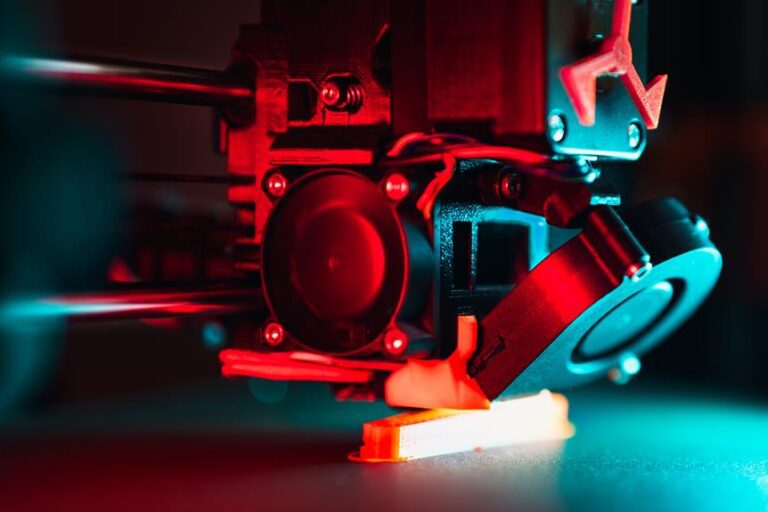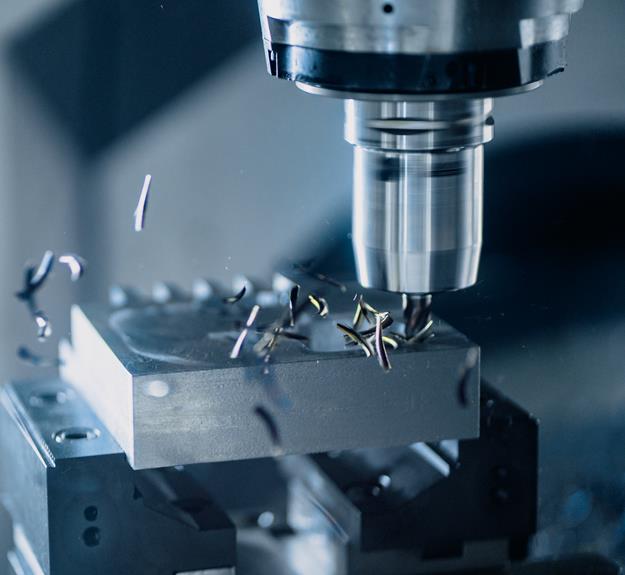EBM 3D Printers: Unlocking New Possibilities in Metal Printing
While traditional methods of metal printing have posed limitations in terms of complexity and precision, EBM 3D printers are now revolutionizing the industry by unlocking new possibilities.
Critics may argue that this technology is still in its infancy, but the advancements in EBM technology have proven its potential.
This article explores the basics of EBM 3D printing, the advantages it offers in metal printing, and the applications that are pushing the boundaries of complex metal part production.
Join us as we delve into the future innovations of EBM 3D printing.
Key Takeaways
- EBM 3D printing uses an electron beam to selectively melt metal powder, allowing for the creation of complex metal parts.
- EBM technology offers design freedom, high accuracy, and excellent mechanical properties in metal printing.
- EBM printers can produce intricate geometries and internal structures that traditional methods cannot achieve.
- EBM technology has applications in various industries such as aerospace and automotive, providing faster production times and cost-effective manufacturing options.
The Basics of EBM 3D Printing
The EBM 3D printing process utilizes an electron beam to selectively melt metal powder, allowing for the creation of complex and intricate metal parts. EBM, or Electron Beam Melting, is a type of additive manufacturing technology that has revolutionized the field of metal printing.
EBM 3D printers work by using an electron beam to heat and melt metal powder, layer by layer, according to a digital design. This process enables the production of highly detailed and intricate metal parts that are difficult or impossible to create using traditional manufacturing methods.
EBM technology offers several advantages in metal printing. Firstly, it allows for the production of complex geometries and internal structures that cannot be achieved through conventional manufacturing techniques. This opens up new possibilities for design freedom and innovation in various industries, including aerospace, automotive, and healthcare.
Secondly, EBM 3D printers have the capability to work with a wide range of metal materials, including titanium, stainless steel, and aluminum, offering versatility and flexibility in manufacturing applications.
In the next section, we will explore the advantages of EBM technology in metal printing, including its cost-effectiveness, speed, and sustainability.
Advantages of EBM Technology in Metal Printing
One of the advantages of EBM technology in metal printing is its ability to produce highly accurate and intricate metal parts. EBM, or electron beam melting, is a 3D printing technique that uses an electron beam to melt and fuse metal powder together, layer by layer, to create complex metal parts. This technology offers several advantages over traditional manufacturing methods.
Firstly, EBM technology allows for the production of highly accurate parts with intricate geometries. The electron beam can precisely control the melting process, resulting in parts with tight tolerances and fine details. This level of accuracy is especially beneficial for industries such as aerospace, automotive, and medical, where precision is crucial.
Secondly, EBM technology enables the production of parts with excellent mechanical properties. The high energy electron beam ensures a thorough fusion of the metal powder, resulting in parts with high density and strength. This makes EBM-printed parts suitable for demanding applications that require robust and durable components.
Furthermore, EBM technology offers design freedom. Unlike traditional manufacturing methods, which often have limitations in terms of geometry and complexity, EBM printers can create parts with intricate internal structures and complex geometries. This design freedom allows for the optimization of parts, reducing weight, improving performance, and enabling innovative designs.
Exploring the Precision of EBM 3D Printers
When it comes to precision in metal printing, EBM 3D printers offer exceptional accuracy. These printers utilize electron beams to selectively melt metal powder, resulting in precise and intricate designs.
The ability to control the beam parameters allows for precise control over the printing process, ensuring high levels of accuracy and repeatability in the final product.
Accuracy of EBM Printers
Examining the precision of EBM 3D printers reveals their ability to achieve exceptional accuracy in metal printing. These advanced machines offer a level of accuracy that opens up new possibilities for manufacturing and design.
Here are some key points to consider:
- Unparalleled Precision: EBM printers use a high-energy electron beam to melt and fuse metal powders layer by layer, resulting in highly accurate and intricate prints.
- Complex Geometries: The precision of EBM printers allows for the creation of complex geometries that were previously difficult or impossible to achieve with traditional manufacturing methods.
- Fine Detailing: EBM technology enables the production of fine details and intricate features, making it suitable for applications that require intricate and precise metal components.
The accuracy of EBM printers empowers industries to explore new design possibilities, drive innovation, and achieve unprecedented levels of freedom in metal printing.
Precision in Metal Printing
Delving into the intricacies of EBM 3D printers, we can uncover the remarkable precision they offer in the realm of metal printing. These printers utilize a high-energy electron beam to melt and fuse metal powder particles together, resulting in highly accurate and intricate metal objects.
The precision of EBM 3D printers is achieved through a combination of factors. Firstly, the electron beam can be precisely controlled and directed to melt the metal powder with pinpoint accuracy. This allows for the creation of complex geometries and intricate details that would be difficult to achieve through traditional manufacturing methods.
Additionally, EBM 3D printers utilize a layer-by-layer deposition process, ensuring that each layer is accurately placed upon the previous one, resulting in precise and consistent final products.
The precision offered by EBM 3D printers opens up new possibilities in various industries, from aerospace to medical applications, giving designers and engineers the freedom to bring their innovative ideas to life with exceptional accuracy.
Applications of EBM in Complex Metal Part Production
The applications of EBM in complex metal part production offer improved design capabilities, faster production times, and cost-effective manufacturing options.
With EBM technology, intricate and intricate metal parts can be produced with high precision, allowing for complex geometries and intricate internal structures.
Additionally, EBM 3D printers enable faster production times compared to traditional manufacturing methods, reducing lead times and increasing overall efficiency.
Furthermore, the cost-effectiveness of EBM in metal printing makes it an attractive option for various industries, allowing for the production of complex metal parts at a lower cost compared to traditional manufacturing processes.
Improved Design Capabilities
One can see the immense potential of EBM in revolutionizing the production of complex metal parts through its improved design capabilities. With EBM 3D printers, designers are now able to create intricate and complex geometries that were previously impossible or difficult to achieve using traditional manufacturing methods.
The improved design capabilities offered by EBM allow for greater freedom in design, enabling engineers to push the boundaries of what is possible in metal part production. This unlocks new possibilities for industries such as aerospace, automotive, and medical, where lightweight and high-performance components are in high demand.
The ability to design and manufacture complex metal parts with EBM not only enhances the functionality and performance of the final products but also offers greater flexibility and efficiency in the manufacturing process.
Faster Production Times
An EBM 3D printer offers the potential for significantly faster production times in the manufacturing of complex metal parts. This technology utilizes an electron beam to selectively melt metal powder layer by layer, resulting in precise and intricate structures. The high energy density of the electron beam allows for rapid melting and solidification, enabling faster production compared to traditional manufacturing methods.
Additionally, the ability to print multiple parts simultaneously further enhances productivity. The inherent speed of EBM printing opens up a wide range of applications, especially in industries where time is of the essence, such as aerospace and automotive. With faster production times, manufacturers can reduce lead times, meet tight deadlines, and increase overall efficiency.
This advancement in metal printing technology is revolutionizing the way complex metal parts are produced, offering freedom and flexibility to manufacturers.
Cost-Effective Manufacturing Options
Cost-effective manufacturing options can be realized through the application of EBM in the production of complex metal parts. EBM technology offers several advantages that contribute to cost savings and increased efficiency in metal part production.
- EBM eliminates the need for expensive tooling and molds, reducing upfront costs and making it more accessible for small businesses and startups.
- The ability to print multiple parts simultaneously on a single build plate increases productivity and reduces overall production time, resulting in cost savings.
- EBM's high deposition rates and material utilization efficiency minimize waste, leading to lower material costs and reduced environmental impact.
By leveraging these cost-effective manufacturing options, businesses can achieve significant savings in their metal part production processes.
However, challenges still need to be addressed to fully harness the potential of EBM technology in metal printing.
Overcoming Challenges With EBM Metal Printing
The significant challenges faced in EBM metal printing require innovative solutions to ensure successful implementation and widespread adoption in industrial applications. One of the main challenges with EBM metal printing is the issue of residual stresses and deformations in the printed parts. During the printing process, the high heat and rapid cooling can cause thermal gradients and result in warping or distortion of the printed components. This can affect the accuracy and dimensional stability of the final product.
To overcome this challenge, researchers and engineers have been exploring various approaches. One approach is to optimize the printing parameters such as layer thickness, beam current, and scanning speed to minimize the thermal gradients and reduce the risk of distortion. Another approach is to use support structures or build platforms that can help to mitigate the effects of thermal stresses and improve the overall stability of the printed parts.
Additionally, post-processing techniques such as heat treatment or stress relief annealing can be applied to relieve the residual stresses and improve the mechanical properties of the printed components. These techniques can help to enhance the quality and performance of the final product.
In the next section, we will explore the future innovations in EBM 3D printing that aim to address these challenges and further unlock the potential of this technology in metal printing.
Future Innovations in EBM 3D Printing
How can EBM 3D printing continue to evolve and push the boundaries of metal printing capabilities? As technology advances, there are several future innovations on the horizon that have the potential to revolutionize the field of EBM 3D printing. These include:
- Enhanced materials: Researchers are constantly working to develop new metal alloys and composite materials that can be used in EBM 3D printing. These materials will offer improved strength, durability, and performance, opening up new possibilities for applications in industries such as aerospace, automotive, and healthcare.
- Increased printing speed: One of the current limitations of EBM 3D printing is the relatively slow printing speed compared to other additive manufacturing processes. Future advancements in hardware and software will enable faster printing speeds, reducing production time and increasing efficiency.
- Improved resolution: EBM 3D printers are known for their ability to produce large, complex parts. However, the resolution of printed parts can still be improved. Future innovations will focus on enhancing the resolution of EBM printers, allowing for the creation of intricate and detailed designs with high precision.
These future innovations in EBM 3D printing will not only push the boundaries of metal printing capabilities but also provide greater freedom and flexibility in design and manufacturing processes. With improved materials, increased printing speed, and enhanced resolution, EBM 3D printing will continue to unlock new possibilities and revolutionize industries across the globe.
Frequently Asked Questions
Are EBM 3D Printers Limited to Printing Only Specific Types of Metals?
EBM 3D printers are not limited to printing specific types of metals. These printers use an electron beam to selectively melt powdered metals, allowing for the printing of a wide range of metal alloys with various properties and characteristics.
How Does EBM Technology Compare to Other Metal Printing Technologies in Terms of Speed?
EBM technology offers faster printing speeds compared to other metal printing technologies. Its precise and analytical approach allows for efficient and timely fabrication of metal objects, unlocking new possibilities and freedom in metal printing.
Can EBM 3D Printers Produce Metal Parts With Complex Internal Geometries?
Yes, EBM 3D printers have the capability to produce metal parts with complex internal geometries. This is achieved through the use of a layer-by-layer additive manufacturing process that allows for precise control and intricate designs.
What Are the Main Challenges Faced When Using EBM Technology for Metal Printing?
The main challenges faced when using EBM technology for metal printing include controlling the heat distribution in the build process, optimizing the powder bed density, and mitigating residual stresses to ensure the production of high-quality and dimensionally accurate metal parts.
Are There Any Limitations to the Size of Metal Parts That Can Be Printed Using EBM Technology?
The limitations of size in metal parts that can be printed using EBM technology depend on the specific EBM printer model and its build volume. However, larger parts may require additional support structures and longer printing times.
Conclusion
In conclusion, EBM 3D printers have emerged as a game-changer in the field of metal printing, offering numerous advantages such as enhanced precision and the ability to produce complex metal parts.
Despite challenges that need to be overcome, EBM technology holds immense potential for future innovations in the 3D printing industry.
With its ability to unlock new possibilities in metal printing, EBM is paving the way for advancements in various sectors, revolutionizing manufacturing processes and offering endless opportunities for customization and design.









